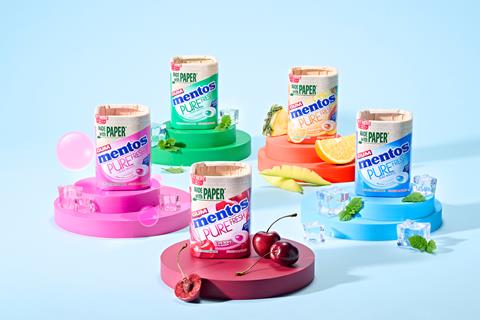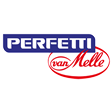The dynamics in the oral refreshment category are shifting, driven by changing consumer needs and the recent shake-up in HFSS compliance in the confectionery category. So how can retailers capitalise?
The oral refreshment category is experiencing a fundamental shift that is challenging decades of established thinking. What was once a straightforward gum-dominated sector has changed into something more complex, driven by evolving consumer expectations and a new understanding of what ‘refreshment’ actually means to modern shoppers.
This transformation isn’t happening in isolation. It reflects wider changes in consumers’ health-conscious behaviour, where even brief refreshment moments become deliberate lifestyle decisions. For years, the refreshment category operated on a clear hierarchy, where gum led and mints followed.
That dynamic is shifting as consumer preferences evolve and brands respond with products that better match how people are looking to refresh themselves.
“Refreshment is more than gum – it’s about mints, too, which are contributing significantly to the category’s growth,” explains Derek Baker, trade marketing controller at Perfetti Van Melle UK. The mint segment stands as a notable exception in the struggling confectionery market, achieving positive volume growth of 6.3% with 8.1 million additional packs sold, making it the only confectionery category to grow while others declined [The Grocer].
But gums are proving their strength, too. Gums have grown +2.9% over the past year [Circana], alongside Mentos Gum securing its position as the nation’s 2nd gum manufacturer, with a total portfolio worth £13.9m and Pure Fresh Gum specifically delivering +11.9% value growth and +19.5% volume growth [Circana].

This resilience across both segments comes down to smart positioning. The functional appeal for breath freshening combined with lower sugar content, helps the refreshment category navigate both consumers’ choice to lower their sugar intake and the challenging HFSS regulations that have knocked high-sugar products out of prime retail displays.
“Both sugar-free and HFSS-compliant, Smint and Mentos Pure Fresh Gum tap into impulse purchases by aligning to shopper health-consciousness,” notes Baker. “Sugar-free mints, especially, are driving growth within refreshment, and we have seen the segment grow at +13.5% [Circana],” adds Baker.
The strategy is paying off even as cost pressures drive confectionery prices up 20% year-on-year [The Grocer]. According to Baker, research shows that 85% of consumers prefer Mentos Pure Fresh Mint Gum to similar offerings [PVM]. Meanwhile, “Mentos Mints have achieved 12.6% growth in value sales while capturing 11% of the mint category,” he says, establishing the brand as the fastest-growing among the top eight mint players [Circana]. The success of both segments proves that aligning products with changing consumer priorities works, even for small everyday purchases.
Are flavours truly refreshing?
Yet perhaps the most significant driver of change in the refreshment category is the emergence of fruit flavours as legitimate options. This shift is being led by younger consumers, particularly those aged 16-24, who show strong preferences for tropical, apple and cherry flavours [The Grocer], also expressing a specific desire for more sour options.
The popularity of fruit flavours in mints and gum is driven by consumers’ experimental nature with food, as they seek pleasure and adventure through innovation in flavour and textures [The Grocer].
Brands like Smint and Mentos have responded with products featuring strawberry, cherry and tropical varieties, exploring flavours that represent a significant departure from traditional offerings. As fruit-flavoured varieties show continued growth momentum, “shoppers seek refreshment and indulgence, which Mentos and Smint offer, with fruit-flavoured mints and gums seen to be a permissible treat,” notes Baker.
“Fruit is growing in the category, with customers buying gum +4.4% more frequently than a year ago [Kantar],” he adds. The market response has been substantial, with Smint experiencing significant growth over the past couple of years, increasing from £4.3m in net sales at the end 2022 to a whopping £9.3m at the end of 2024, achieving £18m in retail sales value (RSV) [Circana].

Why emotional currency matters
Modern refreshment embraces both the physical and emotional, creating opportunities for brands that can address these broader requirements. Mints and gums thrive on-the-go, as 59% of people consume them alone, often between meals and when looking to refresh themselves and feel confident, whereas indulgent sweets are largely consumed at home, with 66% of occasions shared with others [The Forge]. “Refreshment is emotional and functional,” explains Baker.
In today’s demanding work environments, consumers seek products that provide not just physical freshness but also psychological benefits – brief moments of pleasure or mental reset that can be easily integrated into their busy schedules.
Brands are tackling this differently.
Smint’s ‘reset and refresh’ campaign targets working professionals seeking a quick recharge during the day, with the focus moving from pure function to ‘taking a moment’. This is also the focus of Smint’s upcoming £500,000 drive across London and South East stations, which will be backed by 107,000 product samples distributed at key locations.
Meanwhile, Mentos is pursuing Gen Z consumers with its ‘yes to fresh’ campaign, acknowledging that the younger generation sees refreshment as part of a more experience-driven, flavour-first lifestyle. Mentos is supporting its market position with a £1.5m above-the-line campaign featuring out-of-home advertising and shopping centre placements. Running across 421 sites on 5 May, with an expected reach of 4.9m consumers, the investment supporting this category move reflects PVM’s confidence in long-term growth potential.
What comes next?
Post-lockdown social dynamics have contributed to category growth as people return to face-to-face interactions [The Grocer]. However, the trends driving the refreshment category extend beyond temporary circumstances in order to reflect fundamental shifts in consumer behaviour.
For retailers, the implications require strategic consideration. Industry experts recommend ensuring a broad range of gum flavour offerings to appeal to both traditional loyalists and younger users looking for flavours that may have been perceived as more ‘candy’ type flavours in the past [The Grocer]. All of this recognises that today’s refreshment category serves multiple demographic segments with distinct preferences and expectations.
By recognising that refreshment products not only bring physical freshness but appeal to shoppers as an emotional renewal and sensory pleasure signals a category that is moving beyond purely providing functional benefits toward products that deliver meaningful moments of enjoyment integrated into modern lifestyles.
Ultimately, this shift in refreshment demonstrates how traditional retail segments can be transformed when brands successfully identify and respond to changing consumer needs.
To discover more about Perfetti Van Melle’s refreshment products, check out www.perfettivanmelle.com























